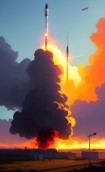(Thread IKs:
fatherboxx)
|
Kraftwerk posted:Is there any news about Ukraine switching their service rifles to NATO 5.56.mm variants or are they still using Soviet/Russian 5.45mm and these "millions of rounds" are being procured through some other means? It shouldn't be too difficult to convert manufacturing lines to make whatever rifle calibre ammo, it's not secret high tech or anything. And unlike with artillery shells there should be plenty of base capacity to source from.
|
|
|
|

|
| # ? Jun 7, 2024 00:34 |
|
Kraftwerk posted:Is there any news about Ukraine switching their service rifles to NATO 5.56.mm variants or are they still using Soviet/Russian 5.45mm and these "millions of rounds" are being procured through some other means? I dunno about anything official but it seems like small arms are as much a mish mash as everything else the Ukrainian army has. I'm pretty sure I've seen M4s for example in the Ukrainian forces.
|
|
|
|
Orthanc6 posted:The amount of ammo an entire nation needs for a few months to conduct a massive counter attack must be a fun job to figure out I don't know if "ironic" is the best term, but ironically, this stuff is pretty well known. I was not a professional logistician, but my understanding is that they're able to model quite accurately the various categories of supplies used by units of various types conducting various types of operations. Kraftwerk posted:Is there any news about Ukraine switching their service rifles to NATO 5.56.mm variants or are they still using Soviet/Russian 5.45mm and these "millions of rounds" are being procured through some other means? They're mostly using 5.45mm still, but there's so much of that ammunition around the world I don't doubt the West can just buy it from other countries and give it to Ukraine. As much as we Americans love our guns, we probably have manufacturers here in the US, even.
|
|
|
|
Henrik Zetterberg posted:How much airspace can a single Patriot battery cover? Can it like, protect Kyiv? Or are we talking a much smaller area? In DCS they have a detection range of ~85 NM and a threat range of ~55 NM. I'm sure they're not real numbers but as a ballpark they have a pretty big coverage area.
|
|
|
Kraftwerk posted:Is there any news about Ukraine switching their service rifles to NATO 5.56.mm variants or are they still using Soviet/Russian 5.45mm and these "millions of rounds" are being procured through some other means? Still on 5.45 and 7.62 I believe. They tried switching away from the AK like 5 years ago, and made an M4-style 7.62 gun too. Now, of course, the calculus could very well be different, but AK is not artillery, and that stuff should be a dime a dozen.
|
|
|
|
Popete posted:Depends on the target and what version of Patriot, I don't think there's any for sure known numbers (stated numbers are almost always not accurate for obvious reasons) but I believe that yes it should cover a city sized area at least. Ok I found an article sighting an unnamed US Official here quote:One former senior military official with knowledge of the Patriot system said it will be effective against short-range ballistic missiles and it represents a strong message of U.S. support, but one battery isn't going to change the course of the war. So maybe not cover the entirety of Kyiv.
|
|
|
|
|
Since we're talking about Finland, seems like there's been a significant shift in which party is control there. Does that affect anything? (I'm not up on Finnish politics.)
|
|
|
|
Another problem is that it's only so many tubes, you have to think about what targets to even launch at.
|
|
|
|
cinci zoo sniper posted:Still on 5.45 and 7.62 I believe. They tried switching away from the AK like 5 years ago, and made an M4-style 7.62 gun too. Now, of course, the calculus could very well be different, but AK is not artillery, and that stuff should be a dime a dozen. The US is changing to 6.8mm for infantry, scouts, combat engineers, and special forces, too. I have a bunch of thoughts on that new platform in the context of what we're learning in the War in Ukraine. I just need to find time to write it (and, honestly, I'm unsure if regulars itt would even be interested.)
|
|
|
|
WarpedLichen posted:Official defense.gov release of the aid package posted above: At the beginning people were saying that the stuff the US was sending to Ukraine would actually save the US money since it was previous generation equipment that required upkeep. Is that still the case?
|
|
|
|
Small White Dragon posted:Since we're talking about Finland, seems like there's been a significant shift in which party is control there. Does that affect anything? A tight election saw a loss for the left-wing PM Sanna Marin and right-wing parties making advances and taking her seat, some of which feels tied to economic troubles that came with the whole russia situation, but I'm sure there's a lot more to consider. It won't effect the country's "gently caress russia" interparty solidarity or the whole being in NATO thing.
|
|
|
|
Small White Dragon posted:Since we're talking about Finland, seems like there's been a significant shift in which party is control there. Does that affect anything? We are having an informative discussion on it in Finland-thread.
|
|
|
|
Ynglaur posted:The US is changing to 6.8mm for infantry, scouts, combat engineers, and special forces, too. I have a bunch of thoughts on that new platform in the context of what we're learning in the War in Ukraine. I just need to find time to write it (and, honestly, I'm unsure if regulars itt would even be interested.) Fwiw I would be interested.
|
|
|
|
Ynglaur posted:The US is changing to 6.8mm for infantry, scouts, combat engineers, and special forces, too. I have a bunch of thoughts on that new platform in the context of what we're learning in the War in Ukraine. I just need to find time to write it (and, honestly, I'm unsure if regulars itt would even be interested.) Yes.
|
|
|
|
Ynglaur posted:The US is changing to 6.8mm for infantry, scouts, combat engineers, and special forces, too. I have a bunch of thoughts on that new platform in the context of what we're learning in the War in Ukraine. I just need to find time to write it (and, honestly, I'm unsure if regulars itt would even be interested.) Also interested, but if not here, then definitely the Cold War/Airpower/unofficial Ukraine conflict thread in TFR would be a great alternative spot for it.
|
|
|
|
Ynglaur posted:The US is changing to 6.8mm for infantry, scouts, combat engineers, and special forces, too. I have a bunch of thoughts on that new platform in the context of what we're learning in the War in Ukraine. I just need to find time to write it (and, honestly, I'm unsure if regulars itt would even be interested.) Also interested. Some US servicemen I spoke to told me they prefer 5.56 because you can carry more of it comfortably on patrols. Apparently keeping your overall weight as low as possible is more important than whatever benefits a full power battle rifle round can offer. I wonder if new recruits going through the pipeline learning on the 6.8mm will have a different opinion.
|
|
|
|
Any information on how the training for the CV90's sent over to Ukraine is going? I hope they'll be able to get some good use out of them.
|
|
|
|
Kraftwerk posted:Also interested. The 6.8 is about the same size and weight as 5.56. The big difference is that the round is a hybrid case with a stainless steel jacket to handle the higher pressure it generates. It is designed to defeat advanced body armor that would be used by a near peer adversary. My concern is that outside of active combat they will use a weaker full brass round for training, etc. There will no doubt be a difference as how the two rounds perform and losing that experience and muscle memory will be a thing. But on the plus side it will allow the rifles to have a much longer service life outside of combat due to less wear and tear from the less powerful round. As we have learned with Ukraine, a rifle in combat will only last a short amount of time anyway before it is either replaced or the user is out of action. The other plus is they will all have a suppressor standard which is a huge thing as it will help save a lot of hearing.
|
|
|
|
Djarum posted:The 6.8 is about the same size and weight as 5.56. The big difference is that the round is a hybrid case with a stainless steel jacket to handle the higher pressure it generates. It is designed to defeat advanced body armor that would be used by a near peer adversary.
|
|
|
|
Mederlock posted:
What's the expected timeline for these replacing the current arsenal of 5.56? Cause that sounds like a timeline for Ukraine and Taiwan getting more hand-me-down guns and ammo than their bodies have room for.
|
|
|
|
Orthanc6 posted:What's the expected timeline for these replacing the current arsenal of 5.56? Cause that sounds like a timeline for Ukraine and Taiwan getting more hand-me-down guns and ammo than their bodies have room for. I believe it's something like 250 000 units over the next 10 years. It's only a replacement for the firearms for the direct combat facing units like the infantry, etc., the rest of the military will still be on M-4's with 5.56 for a good long while
|
|
|
|
Djarum posted:The 6.8 is about the same size and weight as 5.56. The big difference is that the round is a hybrid case with a stainless steel jacket to handle the higher pressure it generates. It is designed to defeat advanced body armor that would be used by a near peer adversary. With my admittedly limited info from this war, I'm not sure the bolded is as true as in previous land wars within Europe up to and including the Yugoslav Wars and Ukraine post 2014. Despite the rusty bullshit handed out to this last round of conscripts, both sides have large reserves of AKs (Ukraine also has access to other AK building nations' poo poo), plenty of rifle caliber ammo, robust domestic production of ammo, and little need to maintain plausible deniability about where it all comes from. On the one hand, the AK is not as Lego-like as an AR. In comparison, damaged rifles can't be as easily taken apart and major components replaced. A bent barrel or otherwise damaged barrel will sideline an AK, and probably make it into donor parts to replace worn items on other rifles. This is less true of the AR, with it's relatively easily replaced barrel and split reciever (upper with bolt, barrel, and firing pin/lower with trigger pack, safety, and stock). On the other hand, there is a lot of commonality in the AK platform rifles with what Ukraine and Russia field. This is split, roughly, between AKMs in 7.62 and AKM-74s in 5.45. Both of these variants share many parts and ammo with their respective squad automatic versions. This makes me think that captured small arms make up a not insignificant amount of even combat arm's weapons. I'd be interested to hear what each country is left with afterwards and how they dealt with distribution of rifles from depots, repair shops, and captured stock. That's one we might actually get some quick info on as demilitarization or turn-in programs get going, non-standard types and parts kits get sold off, and modernization programs get underway. As an aside, does anyone remember when Ukrainian MPs (parlimentarians, not military police) all got rifles? Wood-forend, short barreled AKs with folding stocks that I'm unfamiliar with.
|
|
|
|
Ynglaur posted:The US is changing to 6.8mm for infantry, scouts, combat engineers, and special forces, too. I have a bunch of thoughts on that new platform in the context of what we're learning in the War in Ukraine. I just need to find time to write it (and, honestly, I'm unsure if regulars itt would even be interested.) I'd also be interested on the sources for your body ratios in urban combat! Any good reading recommendations?
|
|
|
madeintaipei posted:As an aside, does anyone remember when Ukrainian MPs (parlimentarians, not military police) all got rifles? Wood-forend, short barreled AKs with folding stocks that I'm unfamiliar with. IIRC that was 1 MP posting an FB post with an AKSU-74.
|
|
|
|
|
cinci zoo sniper posted:IIRC that was 1 MP posting an FB post with an AKSU-74. Ah ha! Rudyk with an AKSU-74. Huh. The light wood threw me off. Consequence of only seeing them IRL in the US with darker furniture, I guess.
|
|
|
|
Mederlock posted:I believe it's something like 250 000 units over the next 10 years. It's only a replacement for the firearms for the direct combat facing units like the infantry, etc., the rest of the military will still be on M-4's with 5.56 for a good long while Is there much difference at this point between using an M4 and using a submachine gun?
|
|
|
|
Kraftwerk posted:Is there much difference at this point between using an M4 and using a submachine gun? Yes, the difference are leagues in scope.
|
|
|
|
Ynglaur posted:The US is changing to 6.8mm for infantry, scouts, combat engineers, and special forces, too. I have a bunch of thoughts on that new platform in the context of what we're learning in the War in Ukraine. I just need to find time to write it (and, honestly, I'm unsure if regulars itt would even be interested.) Is it actually going to happen? They've been talking about it for so long.
|
|
|
|
US Senior Defense Official (SDO) brief re: Ukraine today. Intro then excerpts as I choose. Press Briefing: https://www.defense.gov/News/Transcripts/Transcript/Article/3351824/senior-defense-official-holds-a-background-briefing-on-ukraine/ Press Release with PDA (fast from US stocks, $500 milion) and USAI (weeks to months/years contracted from industry, $2.1 billion) https://www.defense.gov/News/Releases/Release/Article/3350958/biden-administration-announces-additional-security-assistance-for-ukraine/ Highlights: -SDO says lines largely static with significant artillery exchanges, but not much maneuver, and aim is to assist Ukraine go on counteroffensive [My note: just in the lasts 24-48 hours, some reports that Bakhmut lines might be moving in Russia's favor, but it's been months to move a matter of single-digit kilometers, and Bakhmut was originally thought to be potentially falling/evacuated a month ago] -Four efforts: 1: Improved layered air defenses; 2: deliver steady flow of artillery rounds, other ammunition, spare parts, and maintenance support; 3: Armor (vehicle) donations; 4: train combined arms combat and maneuver -SDO says US "understands" Ukrainian strategy in holding Bakhmut. Says Ukraine still has forces to pursue next phase of the war. -When asked about US contracting for 122mm (soviet design) vs 155mm, the answer is kind of wishy-washy. Providing ammo for legacy guns, because Ukraine has them, but also there's a clear hunger for ammo amounts that the US and partners cannot sustain only from 155mm, though efforts are underway to increase 155mm production. [But the US has pretty publicly stated in press briefings and talks outside of this one that 155mm (and some other munitions) are not produced at a sufficient rate to meet demands due to prioritizing efficiency over raw production numbers.] I left all the howitzer discussion in, because there's a fair amount of reading between lines, especially when combined with past US statements over the past 6+ months about ordnance production numbers and drawdown of stocks. -SDO does not say Wagner will be replaced or leadership in any domestic danger, just points out that there is squabbling, when asked about it -No substantive update on Patriot employment or delivery timeline, Abrams delivery timeline. quote:STAFF: Good afternoon, everyone. Thank you for joining us today for this background call. Joining us today is (inaudible) will be on background today with attribution to "a senior defense official".
|
|
|
|
Kraftwerk posted:Is there much difference at this point between using an M4 and using a submachine gun? Yes. About 200m of difference in range, and much better penetration against light body armor. Submachineguns tend to use pistol-calibre ammunition, which means even if the bullet is larger (such as the .45 fired by many American submachineguns in the middle of the 20th century), they have far lower velocity. Charlz Guybon posted:Is it actually going to happen? They've been talking about it for so long. Yes. Sig Sauer was granted the award, it's not being contested, and they're in production. The public news has the first units getting equipped in calendar Q3 this year, iirc. The initial volumes are low enough my guess is the special forces units get them first, and even then not all of them.
|
|
|
|
Small White Dragon posted:Since we're talking about Finland, seems like there's been a significant shift in which party is control there. Does that affect anything? Not with regards to foreign or defence policy, which has always been a very consensus driven area in Finland. For example, even the biggest anti-EU party TF said beforehand that if they enter government coalition then they will not seek exit from EU even though it is their stated goal. Closing the borders from refugees and everyone else is more important them, but it's also unlikely that they would seek to harm themselves by turning against Ukrainians, especially as those are 'the right type' (wink wink nudge nudge). The same with austerity, defence won't get cuts and so there's also enough to give to Ukraine.
|
|
|
|
Orthanc6 posted:What's the expected timeline for these replacing the current arsenal of 5.56? Cause that sounds like a timeline for Ukraine and Taiwan getting more hand-me-down guns and ammo than their bodies have room for.
|
|
|
|
Orthanc6 posted:What's the expected timeline for these replacing the current arsenal of 5.56? Cause that sounds like a timeline for Ukraine and Taiwan getting more hand-me-down guns and ammo than their bodies have room for. The US is not fully replacing M4A1s or 5.56 weapons in general. FN still has a contract to make new-build M4A1s for the US military for years to come. The new weapons aren't replacing M4A1s for everyone in the US army and the army isn't expected to have its own 6.8mm ammo production online for a few more years from now. So the US won't be done with 5.56 or M4A1s any time this decade and probably not next decade either.
|
|
|
|
Interestingly enough the Ukrainians arenít getting old hand-me-down rifles from the US either. The M4s Iíve spotted in go-pro footage or in unboxing videos are all brand new. In some cases the UAF troops that arenít using AK pattern rifles are carrying newer service rifles than what US army infantry get out of OSUT. Kinda crazy to think about.
|
|
|
|
cinci zoo sniper posted:We don't know. It was in the coming weeks as of the 21st of March. Wait, I skimmed over that at first - 23 milion is a significant increase from the previous shipments from what I recall. They were given around 15 mil in the previous packages.
|
|
|
|
Ynglaur posted:The US is changing to 6.8mm for infantry, scouts, combat engineers, and special forces, too. I have a bunch of thoughts on that new platform in the context of what we're learning in the War in Ukraine. I just need to find time to write it (and, honestly, I'm unsure if regulars itt would even be interested.) I'd also be interested Kraftwerk posted:Interestingly enough the Ukrainians arenít getting old hand-me-down rifles from the US either. The M4s Iíve spotted in go-pro footage or in unboxing videos are all brand new. In some cases the UAF troops that arenít using AK pattern rifles are carrying newer service rifles than what US army infantry get out of OSUT. Kinda crazy to think about. That's entirely understandable imo, the Ukrainians are actually fighting a war, give them the good stuff.
|
|
|
|
cinci zoo sniper posted:Also, how much ammo 23 million rounds are, really - how quickly is infantry expected to be spending normal bullets? Finnish combat ration for assault rifles is 6x30 rounds, so if we take this as an average consumption per fighter then you are able to equip 128 thousand men to go into combat once. Or a few brigades to participate in combat for a week once a day. But this is a very simplistic calculation, in reality you don't expect cooks and mortar men to fire their rifles a lot but front soldiers especially in urban combat will use a lot more ammunition. Then there's the US estimate from Vietnam war that it takes 50000 rounds to kill one enemy. If we use this assumption then that pile of ammo would be enough to kill... 460 Russian soldiers. Which makes more sense when you remember that it's the artillery that is the biggest killer in war, infantry's job is to find the enemy and pin them down so the big guns can hit them.
|
|
|
Nenonen posted:Finnish combat ration for assault rifles is 6x30 rounds, so if we take this as an average consumption per fighter then you are able to equip 128 thousand men to go into combat once. Or a few brigades to participate in combat for a week once a day. But this is a very simplistic calculation, in reality you don't expect cooks and mortar men to fire their rifles a lot but front soldiers especially in urban combat will use a lot more ammunition. Alright, what I'm taking away from this is that 23 million rounds is quite a bit, since this probably is backfilling spending in Bakhmut, and the number of soldiers there should be closer to 10k than to 100k.
|
|
|
|
|

|
| # ? Jun 7, 2024 00:34 |
|
Kraftwerk posted:Is there any news about Ukraine switching their service rifles to NATO 5.56.mm variants or are they still using Soviet/Russian 5.45mm and these "millions of rounds" are being procured through some other means? Ukraine is using a mix of all 4 of 7.62x39, 7.62x51, 5.45x39, 5.56x45. Must be fun for people working supply.
|
|
|





































